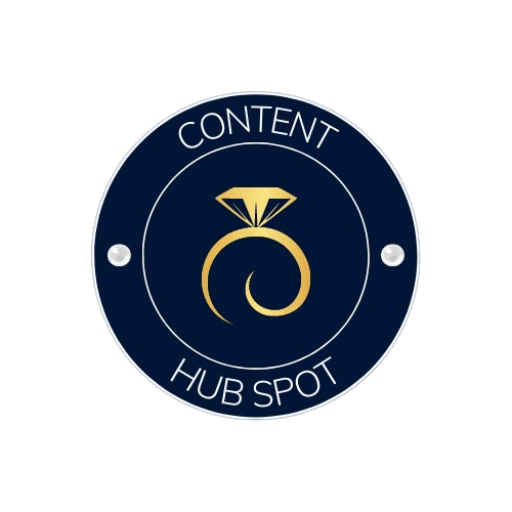In the world of digital landscape, content is king . Regardless of whether you’re overseeing a blog, administering social media profiles, or leading a marketing initiative, a meticulously devised content strategy is of utmost importance. But what exactly comprises a content strategy, and how can you establish a strong groundwork for one?
In this blog post, we shall explore the 5 pillars of a content strategy. Our objective is to clear the concept of content strategy and dissect it into its essential components, Making it easy and understandable for the audience.
The 5 pillars of content strategy :
Audience Understanding (Pillar- 1)
In the world of content marketing, there’s a crucial key to success:
knowing your audience really well. This is where the real magic happens, and I can tell you, based on my experience, it’s the foundation for a successful content plan. Let’s talk about why understanding your audience is super important and how you can use it to make a great content strategy.
Why Understanding Your Audience is important ?
Understanding your audience is important for various reasons, whether you’re a business, content creator, public speaker, marketer, or anyone else trying to convey a message or achieve a specific goal. Here are some key reasons why understanding your audience is important :
Personal Touch: When you know your audience really, really well, you can make content that speaks directly to them. It’s like having a conversation that’s just for them. This makes your content much more interesting to them.
More Engagement: If your audience feels like you “get” them, they’re more likely to interact with your content. That can mean liking, sharing, commenting, or even buying stuff from you. Understanding what your audience likes helps you make content that gets them involved.
Building Trust: Trust is super important on the internet. When your audience sees that you understand them, they’re more likely to trust your brand. They’ll think of you as an expert in your field.
Efficiency: When you make content that your audience likes, you’re not wasting time or money. You’re using your resources in the best way possible to make content that gives you a lot in return.
How to Know Your Audience
Collect Data: Start by gathering information about your audience. This includes things like their age, gender, where they live, what they’re into, and what they do online.
Ask Them: You can also just ask your audience. Send out surveys or polls, and listen to their feedback. This can give you a lot of insight into what they like and don’t like.
Check Social Media: Keep an eye on social media and forums related to your industry. What are people talking about? What questions are they asking? Tools can help you keep track of these conversations.
Look at the Numbers: Use tools like Google Analytics and social media stats to see how your audience behaves on your website and social media. This can tell you which content is working and which isn’t.
Spy on the Competition: Look at what your competitors are doing. What are they doing well, and what’s not working? This can give you ideas about your shared audience.
Applying What You Know to Your Content Plan
Map Out the Journey: Think about the steps your audience takes when they’re deciding to buy something. Make content that helps them along this journey.
Pick the Right Topics: Choose topics that your audience cares about. Address their problems and give them solutions.
Tone and Style: Make sure your content sounds like it’s talking to your audience. Do they want a formal, expert tone, or are they more into a friendly, relaxed style?
Where to Share: Find out where your audience hangs out online. For example, if you’re selling to businesses, LinkedIn might be best. If you’re going after a younger crowd, Instagram or TikTok could be great.
Keep an Eye on Performance: Always watch how your content is doing. Use data to see how many people are getting involved and if it’s helping you reach your goals. If something’s not working, be ready to change your plan.
So, that’s the deal with understanding your audience in content marketing. It’s all about knowing who you’re talking to and making content that really speaks to them.
Clear Goals and Objectives (Pillar-2)
Absence of well-defined goals and objectives renders your content strategy directionless, akin to a ship adrift without a compass. Articulate your intended outcomes for your content. Do you seek to enhance brand visibility, generate leads, or boost sales? Establishing precise, measurable, attainable, relevant, and time-bound (SMART) goals will provide a clear path for your content creation initiatives and facilitate the assessment of your achievements
Content Creation and Planning (Pillar- 3)
This core element focuses on the actual creation of content. Start by setting up an editorial calendar that outlines the types of content, publication schedules, and distribution channels. Maintain a strong emphasis on quality and consistency throughout this process. Ensure that your content is well-researched, relevant, and valuable to your audience.
Envision a variety of content formats, such as blog posts, videos, infographics, and podcasts, to cater to diverse audience preferences. By offering a range of content types, you can engage with your audience in ways that resonate with their individual tastes and interests.
Content Distribution and Promotion( Pillar- 4 )
the impact of even the most exceptional content can wane if it doesn’t resonate with your intended audience. This underscores the crucial role of distributing and promoting your content effectively. Utilize a variety of channels, such as social media, email marketing, search engine optimization (SEO), and paid advertising, to amplify the reach of your content. Tailor your distribution strategy to align with the platforms that your target audience frequently engages with. This way, you can ensure that your content connects with your audience where they are most active.
Performance Analysis and Optimization (Pillar-5)
The final and essential component of your content strategy centers around ongoing improvement. To achieve this, follow these steps:
Step 1: Keep an Eye on Performance
Regularly monitor how your content is performing. Look at metrics like website traffic, audience engagement, conversion rates (such as sign-ups or purchases), and the return on your investment.
Step 2: Dive into the Data
Delve deep into the data and statistics you’ve gathered. Identify what’s working well and pinpoint areas that could use improvement. Think of it as uncovering valuable insights in a treasure trove of information.
Step 3: Make Enhancements
Use your findings to make your strategy even better. Adjust your content, fine-tune your approach, and align it with your audience’s preferences, much like tuning a musical instrument for a beautiful melody.
In summary, continually keep an eye on how your content is doing, analyze the data, and leverage these insights to strengthen your strategy. Think of it as a recipe for ongoing success that gets better with each iteration.
conclusion
Crafting an effective content strategy may seem daunting, but by breaking it down into these 5 pillars, you can create a strong foundation for success. Remember that content strategy is not static; it evolves with your audience and industry trends. By consistently revisiting and refining these pillars, you’ll be well-equipped to navigate the ever-changing landscape of content marketing and achieve your goals.





Pingback: Content Marketing vs Content Writing: Your Path to Mastery